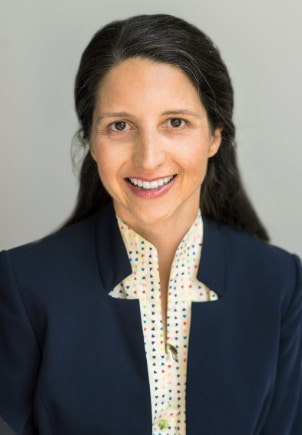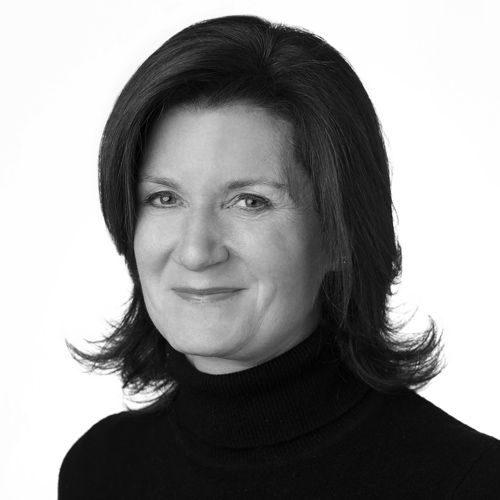|
Getting your Trinity Audio player ready...
|
Building a global company requires crisp communication, refined processes, and constant innovation. Whether that means holding true to perennial methods or veering off toward frontier approaches, one maxim remains consistent: in order to evolve, companies must solve and resolve major issues before they impact the bottom line. And few understand the critical significance of innovation quite like Stephanie Foster, Pearson’s chief intellectual property officer and associate general counsel.
As a social worker turned legal counsel, Foster knows what it takes to change minds. And during her many years at the company, Pearson has undergone an enormous amount of change, expanding its offerings from textbooks and publishing into the wide world of education technologies and adaptive learning. Simply put, the classroom has changed, and Pearson has followed suit, shifting how it approaches problems in both the classroom and the boardroom.
“We are neither a pure tech company nor are we a pure content publisher,” Foster explains.
And that hybridization creates a unique set of challenges, especially when it comes to patents and copyright. To meet this challenge head on, Foster and her team have developed a novel approach to the disclosure process.
“Some companies have a mandatory disclosure process,” Foster says. “Pearson takes a practical and pragmatic approach. We see innovators as pure technologists—people who have insight into what is novel and valuable. Because of this, Pearson lets inventors self-disclose and, likewise, invites them to make quarterly check-ins. In this way, our lawyers and technologists are able to combine minds.”
It is this combination of minds that makes the global IP strategy truly synergistic. “It’s been a challenge to integrate and centralize as a global company,” Foster says. “We were built by acquisition, and as a result, we are able to operate much more independently than the average publisher. As such, we are bringing it all together in a collaborative, synthesized approach.”
This collaborative approach takes the form of increasing the amount of in-house staff. As a result of building an in-house team of legal, trademark, and copyright experts, Pearson has become more nimble—and, at the same time, capable of deriving value from massive swaths of data. All the team members have access to the same resources and can approach Pearson’s flood of innovation from multiple angles at once. “Having this level of in-house expertise not only added more value than we could get relying on outside advice but has turned out to be far more cost-efficient as well,” Foster says.
“Because we have thousands of team members all over the world developing and inventing new technologies every day, we promote disclosure across the board,” adds Foster, who goes on to explain the novel ways in which Pearson bottles up the magic of innovation. “Sometimes, an invention comes out of a hackathon or something that’s not part of a product trajectory. Because these inventions are not always immediately obvious upon conception, there is an online disclosure portal that helps cut through bureaucracy and expedite the process.”
Pearson’s use of online portals doesn’t stop there, though. The company has also teamed up with Acclaim Badging to generate recognition methods that add incentives for inventors. In a nutshell, the badges make an eventual appearance on the inventor’s LinkedIn page, granting that employee not only the satisfaction of in-house recognition but also the long-term benefit of a bolstered résumé.
“The primary goal of the program is to promote and protect innovation,” Foster explains. “The program is not only about patenting our inventions, but also recognizing and incentivizing our inventors. We reach out to our innovators, from product leadership on down, to encourage and reward
innovative thinking and ensure they receive exposure for contributions.”
Foster also points out that in order to keep innovations and disclosure in constant flow, the team relies on a rather open approach to acknowledging
staff contributions.
“Our recognition program itself is fairly democratic,” she says. “Any inventor who brings forth a patent receives recognition. Some of our most recent patents were related to artificial intelligence and analytics as well as personalized learning and adaptive learning technologies. But we have also selected methods used to ensure student privacy because this is also critical to our business.”
As a result of recognizing such a high volume of excellent work, the team at Pearson has likewise pushed itself to innovate in terms of how this recognition is delivered. “Recognition can be traditional in terms of including monetary compensation for patents,” Foster says. “But, we have also done surveys to see what matters to our employees, and what we’ve found is that intangible recognition is key, exposure within the company is key, and even though a check and/or award is nice, we still believe that having senior leadership meet with the team makes a big difference as well.”
Foster further explains that the inventors at Pearson want “something for bragging rights—something for career building. And, our inventors and technologists at large are pleased to have a feather in the cap.”
Reflecting on all the changes she has observed, Foster takes a moment to explain her specific role within the context of the whole.
“As the chief IP officer of the company, my role is to not only lead our function and my team but also to provide thought leadership to the company at large and help steer us toward the most effective IP strategies at every level of our business,” she says. “I enable functions across the country. I work with anyone from directors to government-relations groups. And, in addition to managing a team, I am also the evangelist and advocate for choices that benefit the company at large.”
Such a vast and varied role certainly demands constant effort and foresight on Foster’s end. She is also careful to emphasize that having a seasoned team of experienced IP practitioners such as her senior patent counsel, Karl Fazio, has been essential. But the rewards for both her and Pearson have remained constant. Given the ever-evolving nature of the education and technology sectors, it makes sense to see companies such as Pearson placing an emphasis on IP. “The company is built on original content,” Foster says. “IP is our currency. We don’t make widgets that we can secure in a warehouse. Our most valuable assets are intangible, and our IP strategy is how to protect them.”
***
Rouse China:
“It has been a pleasure working with Stephanie to reposition Pearson in the emerging markets of Greater China and Southeast Asia. Her astute navigation of the region’s complex commercial, legal, and cultural issues has been fundamental to Pearson’s success.”
—Rachel Tan and Tim Smith, Executives
***
Cozen O’Connor:
“We at Cozen O’Connor greatly respect the pragmatic shrewdness through which Stephanie has managed Pearson’s intellectual property and appreciate the collaborative vision and strategic guidance she has employed with her team to help them flourish.”
—Patrick Gallagher, Member

